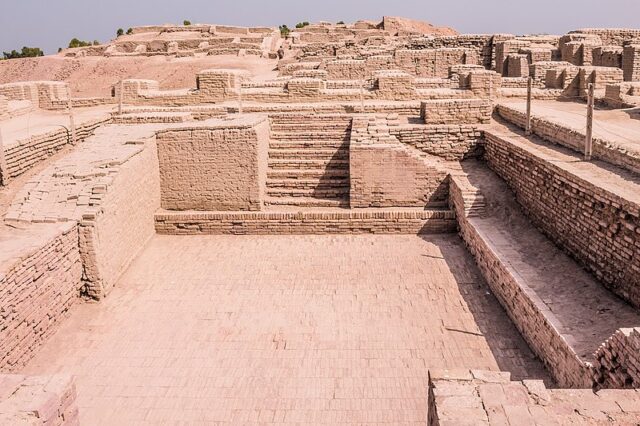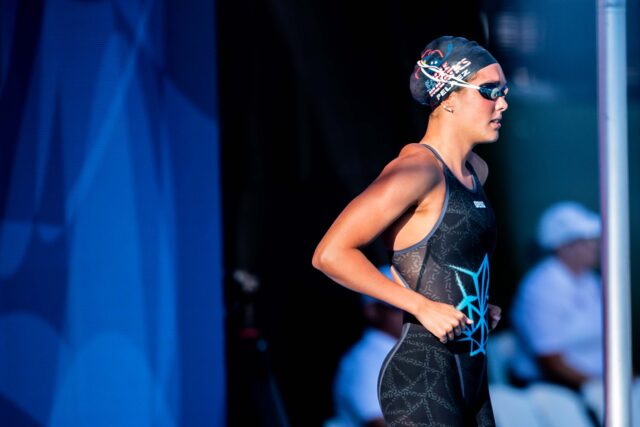By SwimSwam Contributors on SwimSwam

Courtesy: Sean Watwani
Many people indulge in swimming as a pastime or sport. However, not everyone pays attention to the history of this activity and how it has developed over time. Swimming is not the same as it was a few centuries ago. Strokes have changed over time, new techniques and methods have emerged, and competitive rules have been added and altered throughout the years. The origin and evolution of swimming is truly captivating.
So how did it start? Swimming dates back to around 2600 B.C.E. This is when the first pool was created, in Mohenjo-Daro. Cave art depicting people swimming from approximately 2500 B.C.E was uncovered in Ancient Egyptian caves. Evidence proves that it later spread to civilizations like Ancient Greece, Rome, Japan, & Assyria. It was used for crossing bodies of water, battles, rituals, and more. Swimming became a part of ancient Greek and Roman martial arts training and was eventually mandatory for kids to learn in both Ancient Greece and Japan. Many children from these ancient civilizations learned to swim around the same time they learned to walk. In fact, Greek philosopher Plato states if one doesn’t know how to swim they are uneducated. All in all, swimming dates back to ancient times and was a crucial skill to possess.
The 1800s came with a lot of firsts for swimming. Some of the first modern pools were built, the first competitive competitions were held, it was added to the Olympics, and many swimming committees and organizations were established. One of the first competitions was held by the England National Swimming Society in 1837 in London. When Australia hosted one of the first international swim competitions in 1846, many nations wanted to host their own, with America finally hosting one in 1877. Swimming was added to the Olympics in 1896, in Athens, Greece. There were 4 events for swimming in total all in open water, one of which was only for Greek Navy sailors. Swimming was officially considered a sport in the late 1800s, when many national athletic organizations and national swimming organizations were founded. The 1800s were a very important time for the beginnings of modern swimming.
Swimming changed immensely during the 1900s, this is when it evolved to what it is today. Numerous changes in rules, equipment, and standards were introduced at this time. One change included women being allowed to compete in the swimming Olympics starting in 1912. Obstacle courses previously used in competitions were removed after the introduction of the FINA. Additionally, pool sizing guidelines were introduced in 1924 setting standard lengths, widths, depths, and changes in how the pools were measured. Some changes in stroke and technique included the introduction of the flip turn by Al Vande Weghe in 1934, the separation of butterfly and breaststroke in 1952, and the addition of butterfly to the IM (individual medley) in 1953. In 1989 a 10m blastoff limit was placed but was later changed to 15m and applied to butterfly and backstroke in 1991, which was also the year when the modern backstroke turn was allowed. In the 1960s and 70s, a new fashion was found in the pool, these are the swim caps and goggles. Originally made for fashion and for hair to remain dry, caps are now used to reduce drag in order to increase speed and efficiency. The goggles used in earlier times were much different than the ones we use now, this includes changes in materials, design, and technology. All this demonstrates how much swimming has progressed into what it is today.
Over the years, this sport and pastime that many people around the globe enjoy, has been altered and shaped to what it is today. Many changes in rules, regulations, technique, technology, and more have been introduced. What started as people utilizing this skill in ancient civilizations to cross bodies of water, fight battles, perform rituals, and more, became a sport both competitive and leisure. It is truly remarkable how swimming originated and developed over the years. So next time you’re at a swim meet, or in a pool for fun, take a moment to ponder on the rich history of swimming.
 ABOUT SEAN WATWANI
ABOUT SEAN WATWANI
Sean Watwani, an avid swimmer, was born and raised in Southern California. He enjoys many hobbies such as aquatic sports, biking, and cooking. However, his true passion is in the water, where you can often find him on the beach, swimming competitively, playing water polo, surfing, paddle boarding, and kayaking. Sean is a high achieving student who attends Whitney High School. He makes it a point to engage in his favorite activities and is an active member of the Cerritos Aquatic Club and is a former Long Beach Junior Lifeguard. His love for the water has him pondering the question, “how did swimming become what it is now?” This spurred him to research in depth and write this article.
SwimSwam: Beneath The Surface: Dive Into the History of Swimming


















You must be logged in to post a comment Login